Learn how to make DIY soft scrub to clean your bathrooms and kitchen! This homemade scrub cleanser is perfect for cleaning dirt and grime, and REALLY is to make with three ingredients plus water.
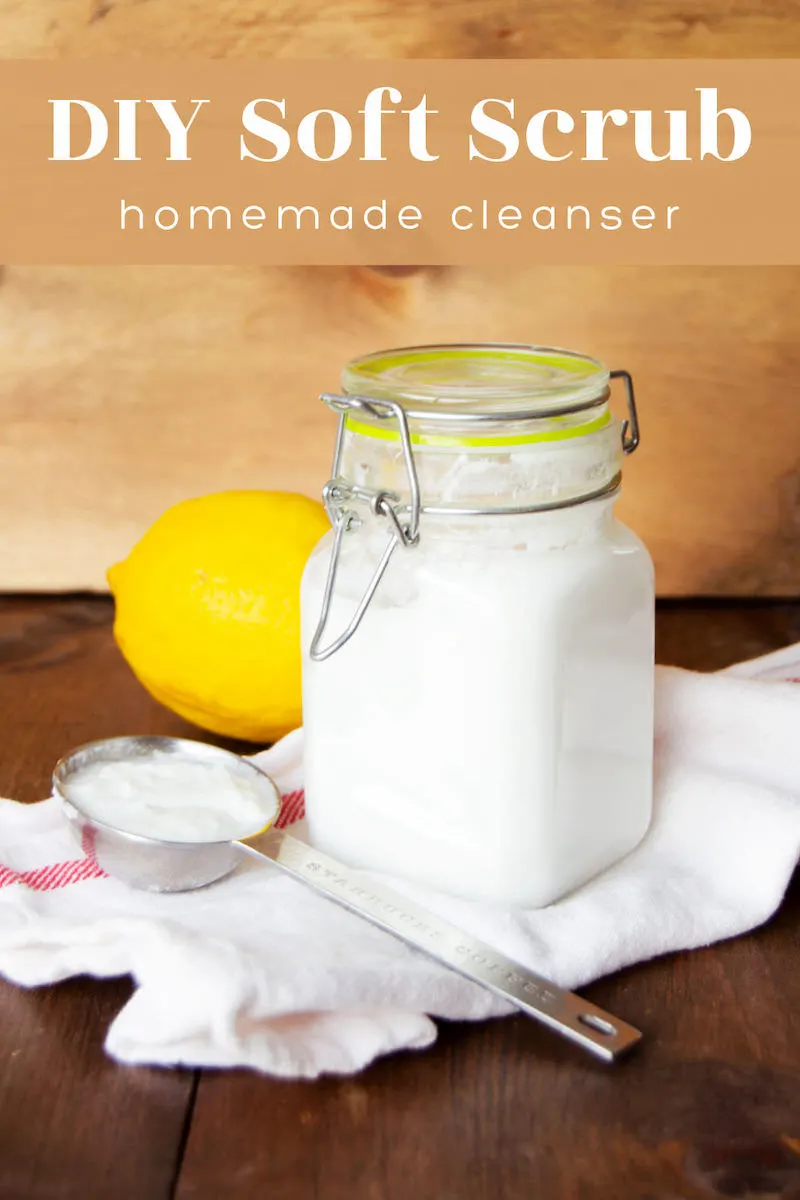
I love making my own homemade cleaners. As I’ve mentioned in other posts, I have an allergy to a lot of cleaning products. Okay “allergy” might be extreme, since I’ve never been tested . . . but I know they give me headaches.
Sometimes I still purchase cleaning products, but for the most part I try to make my own whenever possible. As you can imagine, it’s really important to me that the recipes work. And this DIY soft scrub is one of my favorite recipes!
It’s an all-purpose cleaner that works on lots of surfaces in the kitchen and bathroom. This scrub cleans sinks, bathtubs, floors, showers, and even pots and pans. It is a VERY gentle abrasive, so it’s not going to scratch any surfaces. Yet it is aggressive enough to remove soap scum, burned on grit, and other harder-to-clean spills.
Homemade Soft Scrub
You’re going to be cleaning the bathroom or the kitchen sink in no time with this recipe! Before we dive into the recipe, I’ve got frequently asked questions for you. If you find you don’t need them, just scroll down. Otherwise, here’s what people are asking me about this post.
What are the ingredients in soft scrub?
According to the Soft Scrub website: water, calcium carbonate, sodium dodecylbenzenesulfonate, alcohol ethoxylate, sodium chloride, sodium hydroxide, sodium bicarbonate, fragrance, preservative, D-limonene, and linalool.
There are only three (optional four) ingredients in this homemade recipe, one of them being water. The baking soda is also sodium bicarbonate.
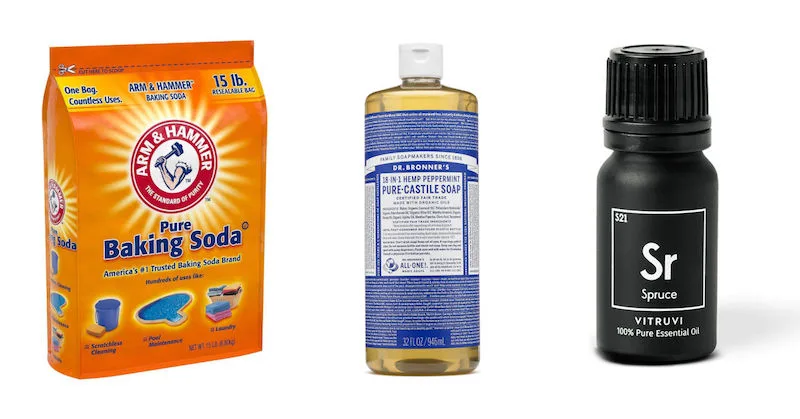
How do you make a soft scrub with bleach?
You’ll use approximately 1/2 T bleach with this recipe – you can just stir it in. I would also remove the essential oil unless there’s one you know that you like with the bleach smell. But I feel like the bleach would overwhelm the scent anway.
Is this recipe antibacterial?
It is not. You would have to add bleach to it (see above). Tea tree is also a natural antibacterial if you’d like to add that as your choice for essential oil.
Will this homemade soft scrub recipe scratch glass?
No, it’s a very gentle abrasive. It shouldn’t scratch glass, steel, or ceramic. Having said that, I always recommend doing a test before applying anything new to a surface you haven’t before. Do a small area to make sure!
How do I apply this scrub?
Use a sponge to apply! Let sit, and then you can use a sponge or old toothbrush to scrub into surfaces and clean. Rinse out the sponge and wipe away the cleaner from the surface, then rinse.
If you’re ready to get the recipe, scroll down!
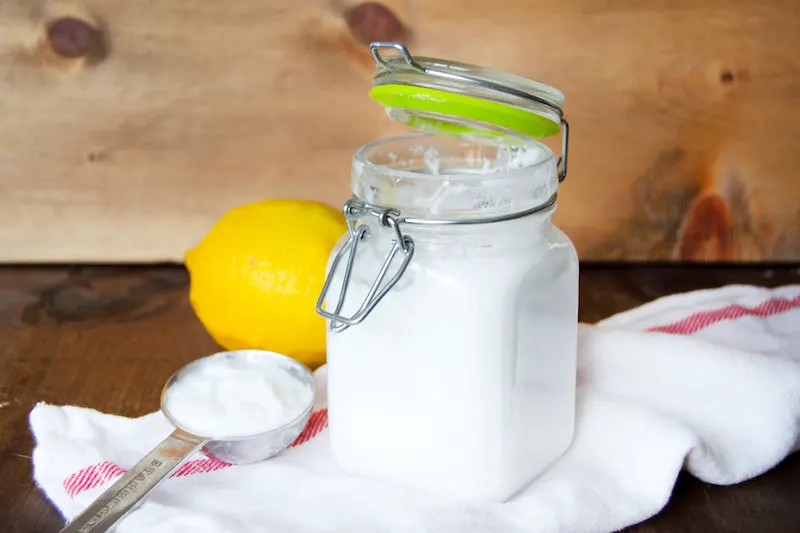
Gather These Supplies
- Mason jar – clean and dry
- Spoon or popsicle stick
- Baking soda – 1 cup
- Dr. Bronner’s pure castile soap – 1/4 cup
- Essential oil – 10 to 15 drops (optional)
- Water – enough to make a paste, about 1/4 to 1/3 cup
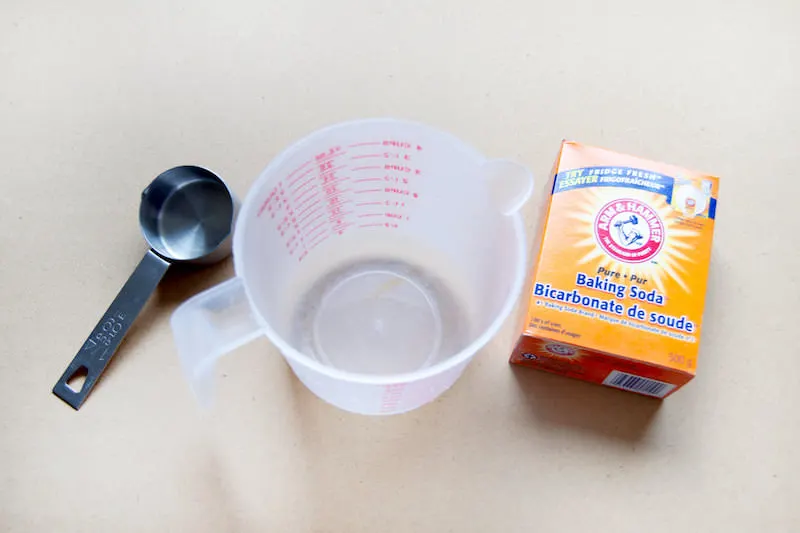
You’ll begin with three supplies. It’s hard to see in this photo but I have 1/4 cup of castile soap in a measuring cup, then there’s also baking soda . . plus you’ll need water. The essential oils are optional if you would like a scent. This is if you’d like to add additional scent to your castile soap, or if the castile is unscented.

Combine the baking soda with the castile soap in a measuring cup.

Stir, stir, stir. You’re going to be making a paste. It’s going to be a little thick. Add the water.

Continue mixing until your homemade soft scrub cleaner is a paste consistency that can be applied easily to a surface. Also add a small amount of essential oils (if you choose) at this time.
Store your magic cleaner creation in a mason jar! Make sure it’s tightly sealed and out of the reach of children. It’s all natural, but you still don’t need anyone getting into it.
To use, you’ll apply to the surface with a sponge, scrub in, and wipe away. Then rinse. The amount you use really depends on the area you are cleaning.
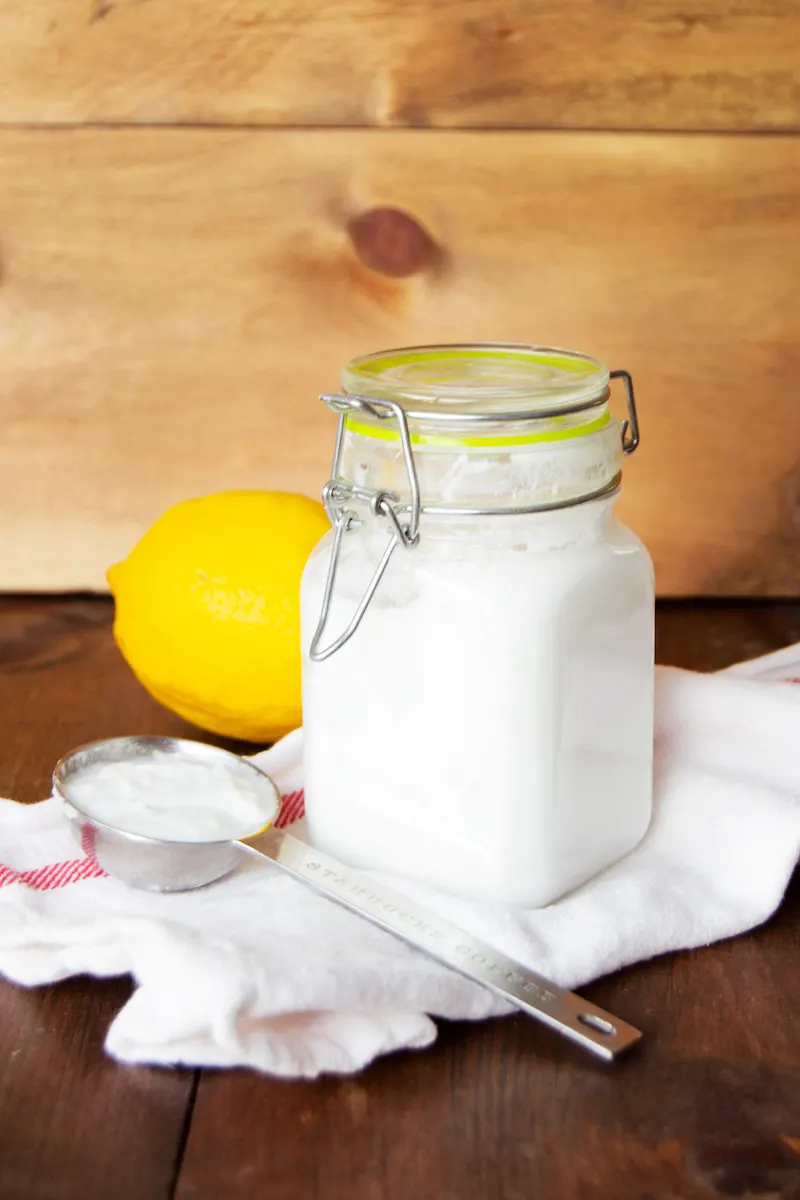
I would say I wish there were more to this recipe, but I don’t. It cleans perfectly as-is!
DIY Soft Scrub
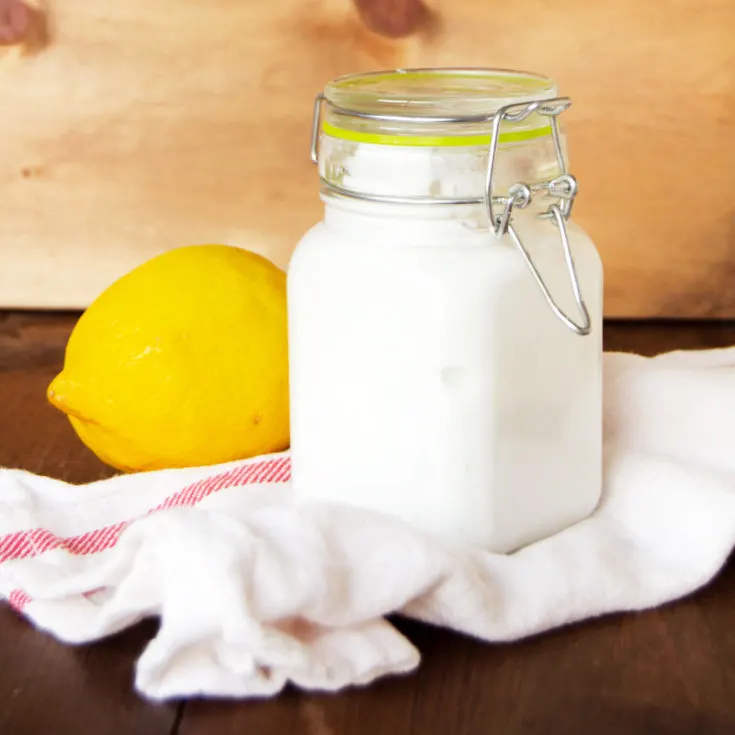
Make homemade scrub cleaner using simple supplies. This is a natural soft scrub recipe on a dime.
Materials
- Baking soda - 1 cup
- Pure castile soap - 1/4 cup
- Essential oil - 10 to 15 drops (optional)
- Water - 1/4 cup
Tools
- Mason jar
- Spoon or popsicle stick
Instructions
- Combine the baking soda with the castile soap in a measuring cup.
- Stir, stir, stir to make a thick paste. Add the water.
- Continue mixing until your scrub is a paste consistency that can be applied easily to a surface.
- Also add a small amount of essential oils (optional) at this time. Stir again. Store in a mason jar.
- To use, apply to a surface with a sponge, scrub in, and wipe away. Then rinse with warm water.
Did you enjoy this homemade soft scrub recipe? If so, leave me a comment – plus I’d love for you to check out these other posts:
Rebecca Goodrich
Thursday 9th of November 2023
Thank you for this. Works well. I, too, am allergic to fragrances, and chemicals high in VOCs--volatile organic compounds. I get headaches, sunburn-type red rash reactions, asthma. Also makes my eyes dry and painful. No point to use those.
Amy
Thursday 9th of November 2023
Good I'm glad you like it!
Dawn
Monday 30th of October 2023
Can I add more water to put it in to a squirt bottle?
Amy
Monday 13th of November 2023
I think you could try it and see how well it cleans!